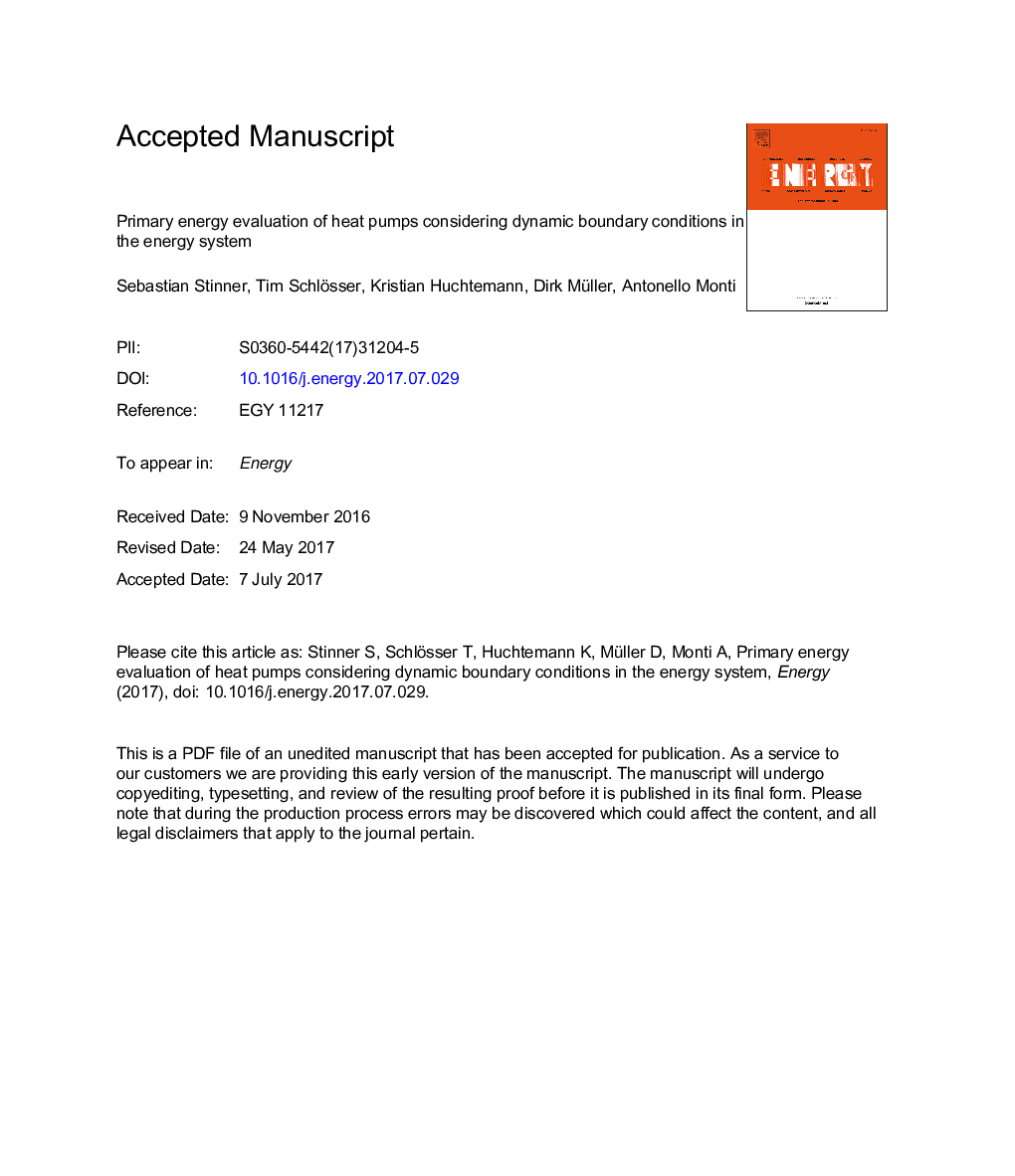| Article ID | Journal | Published Year | Pages | File Type |
|---|---|---|---|---|
| 5475485 | Energy | 2017 | 76 Pages |
Abstract
An introduction of high shares of renewable energy sources (RES) into the energy systems leads to changes in energy system operation. This holds on the one hand for the national energy system (NES) where the operation of conventional power plants needs to be adapted to the availability of RES. On the other hand, the electrical distribution grid might be overloaded by high injections of RES power. Both aspects are time-dependent. However, actual regulations for energetical evaluation of building energy systems do not account for this variancy in time during the year. To overcome this discrepancy, this work deals with an evaluation scheme that includes the time-dependency both on the NES level and the local grid level. For this purpose, the usage of heat pumps and corresponding thermal energy storages (TES) is analyzed. In general, higher RES shares lead to lower primary energy factors (PEF). In particular, an increasing TES size reduces the average PEF for all scenarios as the system can operate in more favorable times with lower PEF. Additionally, especially local electrical grids with high wind power integration can have an important influence on the average PEF during operation.
Keywords
Related Topics
Physical Sciences and Engineering
Energy
Energy (General)
Authors
Sebastian Stinner, Tim Schlösser, Kristian Huchtemann, Dirk Müller, Antonello Monti,
